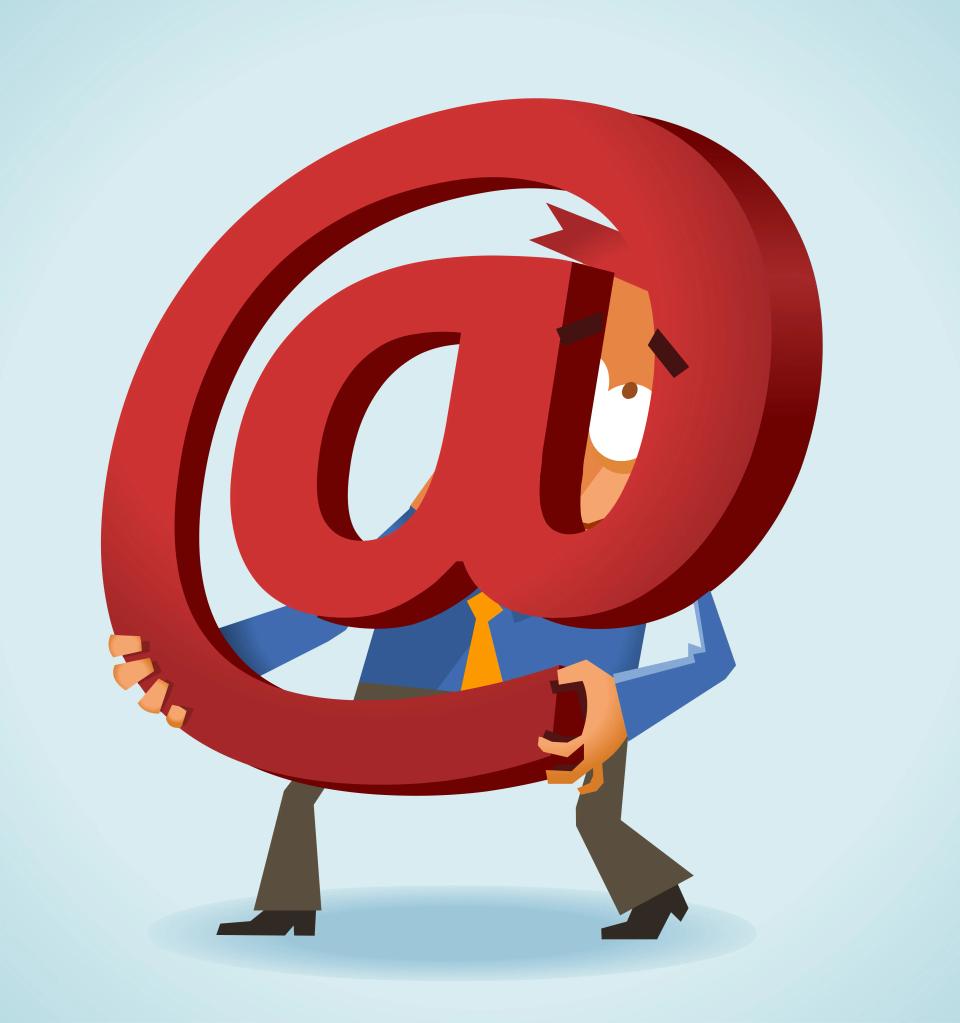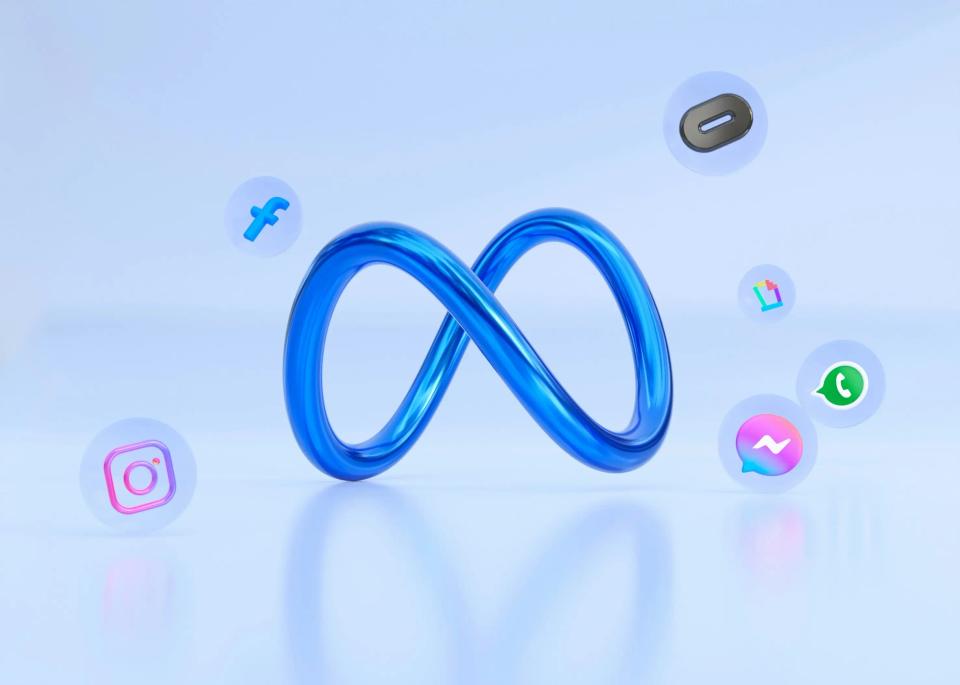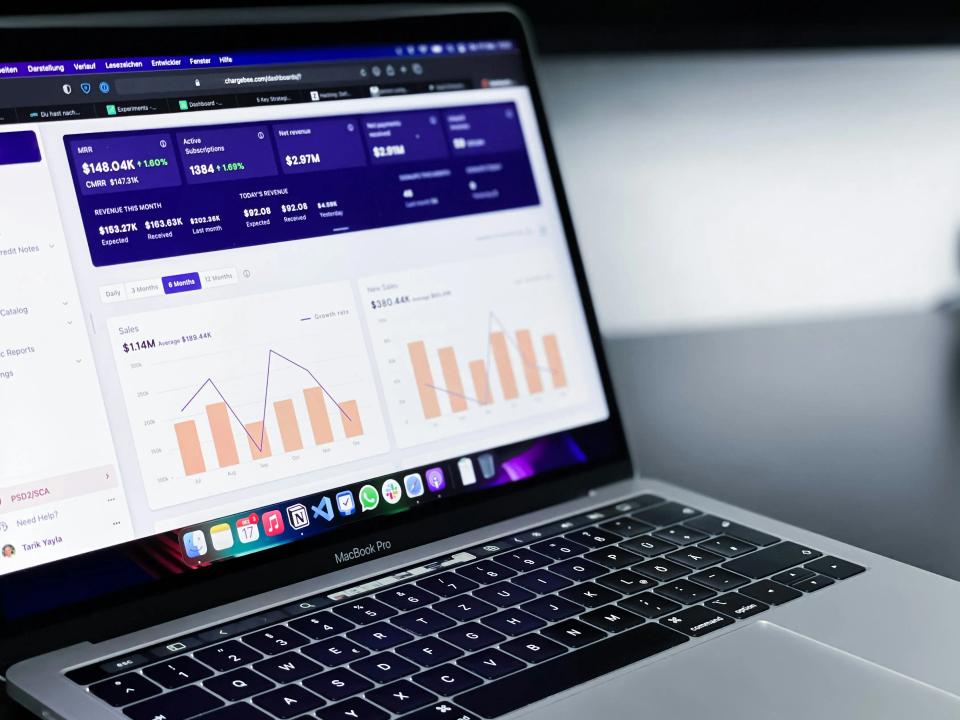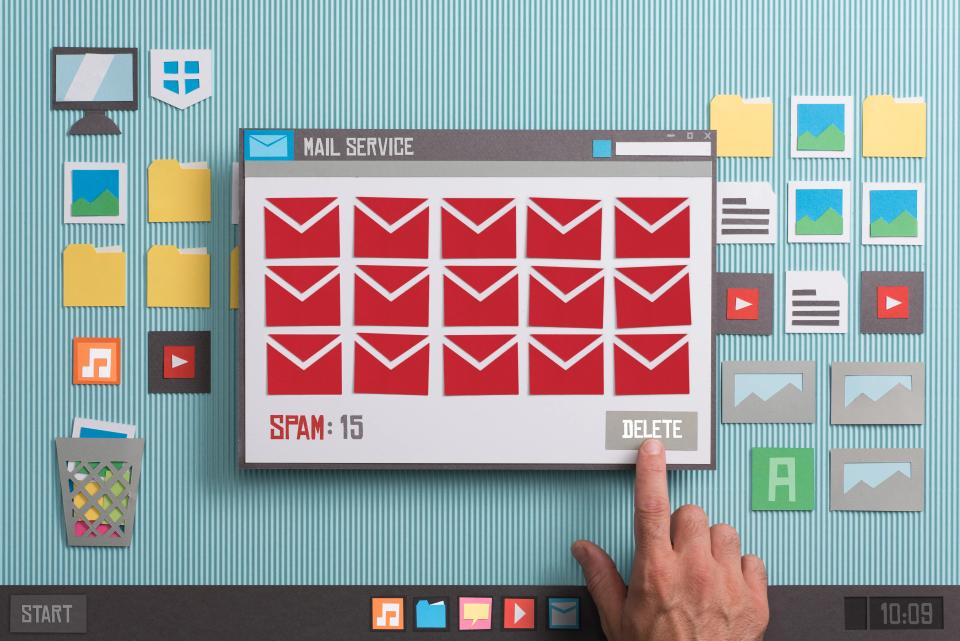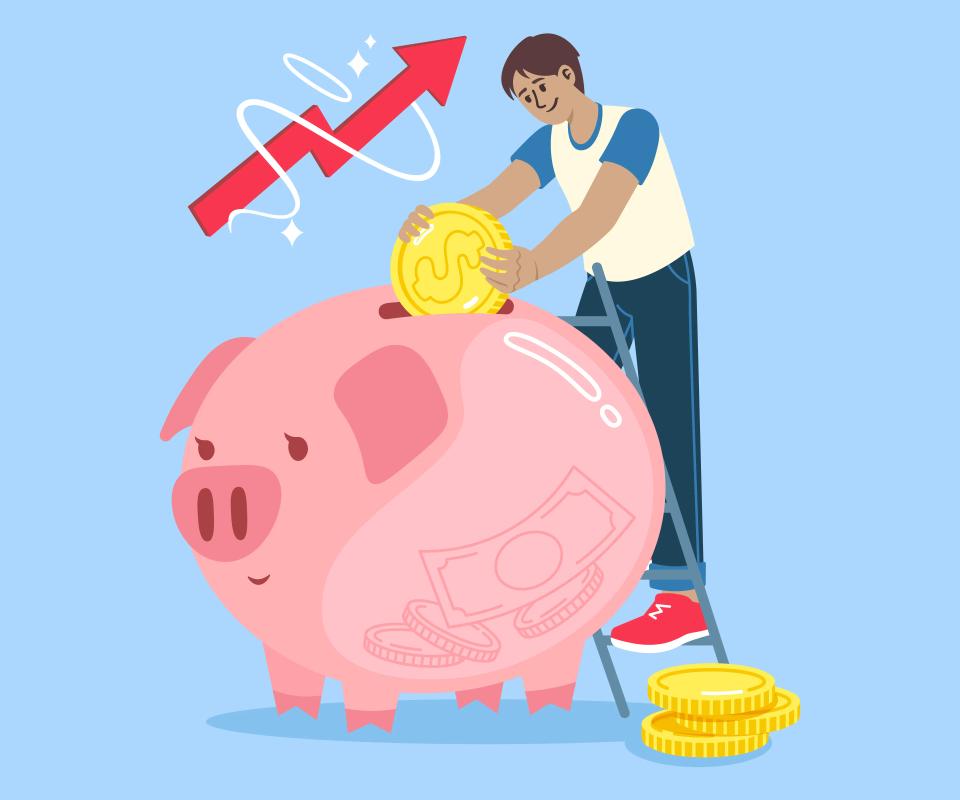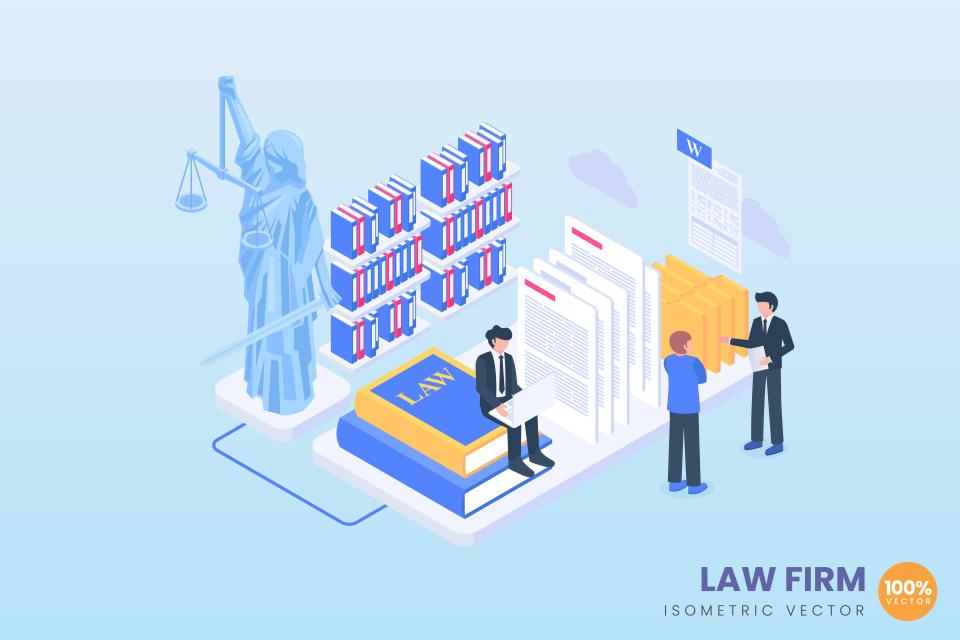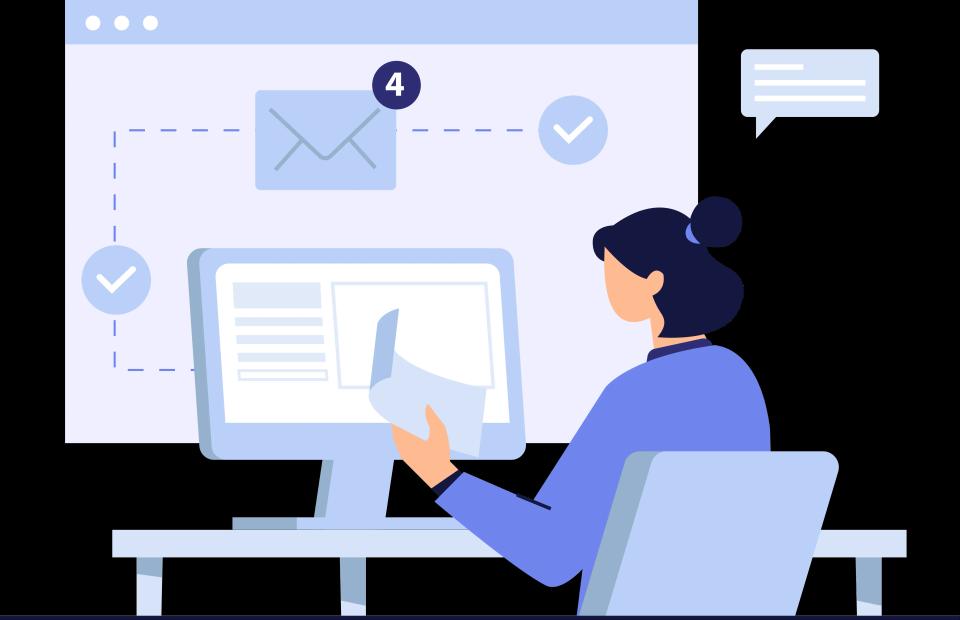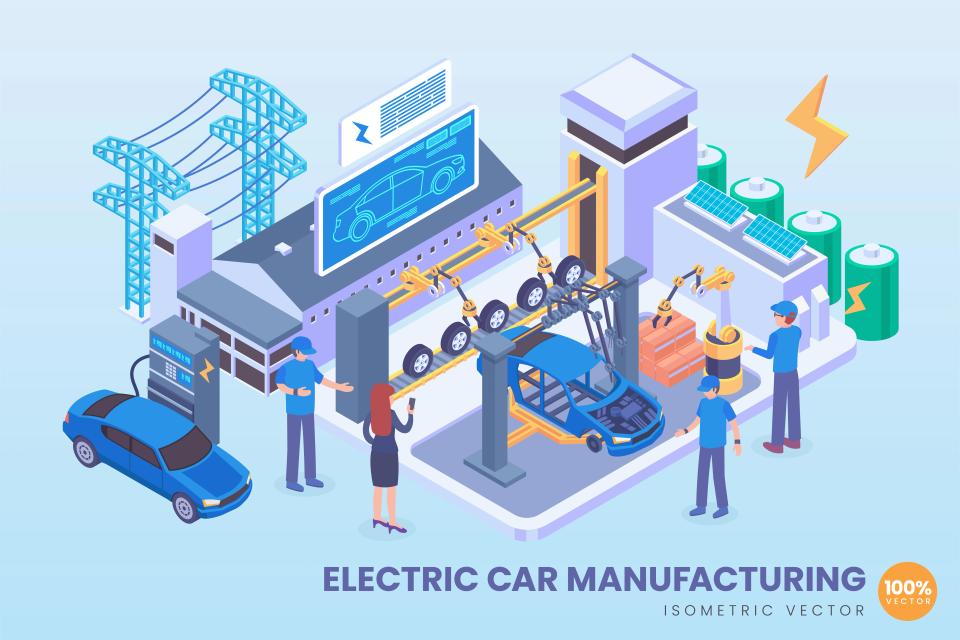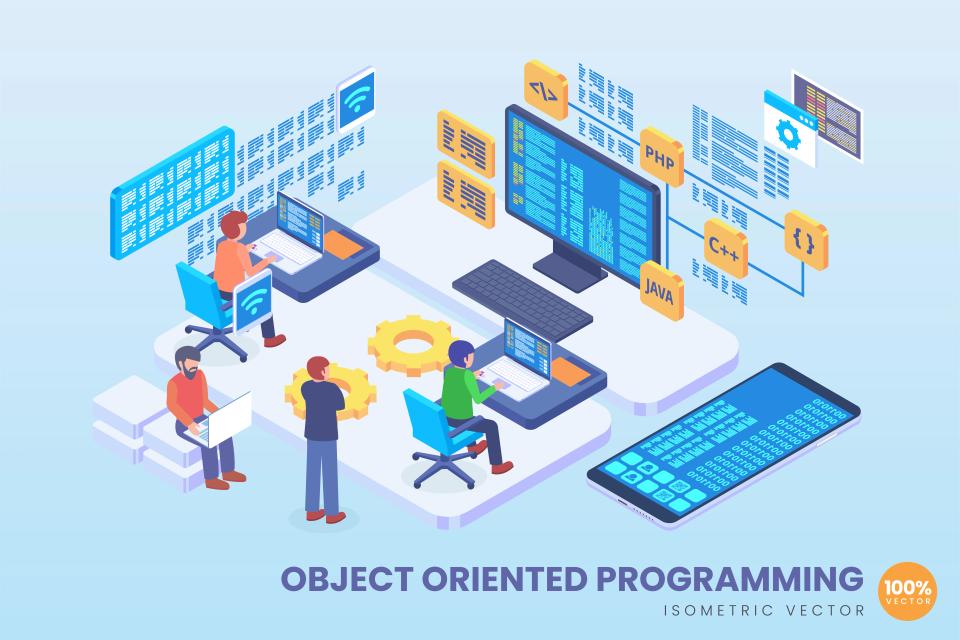Is your agency's growth sputtering? Are you tired of the feast-or-famine client cycle, constantly wondering where the next project will come from? Imagine a steady stream of qualified B2B leads landing in your inbox, eager to hear how your digital marketing genius can transform their business. This isn't a pipe dream; it's the power of strategic cold email outreach.
Many agency owners shudder at "cold email," picturing spammy messages and dismal results. But what if I told you that cold email, when done right, is one of the most potent, direct, and cost-effective ways to connect with your ideal clients? It’s time to ditch the myths and embrace the reality: valuable, targeted outreach gets results. At CaptivateClick, we've seen it transform agencies, and now we're pulling back the curtain to show you how.
This guide is your roadmap. We'll walk you through every crucial step, from laying a rock-solid foundation to crafting emails that demand attention and convert prospects into loyal clients. Get ready to turn your agency's lead generation into a well-oiled machine.
I. The Uncapped Potential of Cold Email for Agencies
A. The Agency Growth Challenge
Let's be honest. Running a digital marketing agency means you're always on the hunt. You need a healthy pipeline of new clients to not just survive, but to truly thrive and scale. Relying solely on referrals or inbound leads can feel like leaving your agency's future to chance.
The constant pressure to find new business can be exhausting. It pulls you away from what you do best: delivering amazing results for your existing clients. But what if there was a proactive way to fill that pipeline, giving you more control over your agency’s destiny?
B. Why Cold Email (Still) Matters
Think cold email is dead? Think again. It remains a surprisingly powerful tool, especially for B2B lead generation. Why? Because it offers a direct line to the decision-makers, cutting through the noise of social media and crowded ad spaces. According to industry insights, cold emailing boasts an impressive average ROI, with some studies suggesting it can be as high as $42 for every $1 spent, making it incredibly cost-effective.
Many fear being labeled a "spammer." But here’s the secret: it’s not spam if it’s valuable and meticulously targeted. When you offer genuine solutions to real problems, your email becomes a welcome interruption, not an annoying intrusion. In fact, a significant percentage of B2B buyers actually welcome relevant cold emails when they are actively looking for solutions.
This method is also incredibly scalable. Once you develop a winning formula, you can reach a large, relevant audience consistently. This predictability is gold for any agency aiming for sustainable growth.
C. What You'll Learn
Consider this your agency's playbook for cold email success. We're not just going to give you vague theories; we're handing you actionable strategies. You'll discover how to pinpoint your ideal clients, build laser-focused prospect lists, and write emails that don't just get opened—they get responses.
At CaptivateClick, we live and breathe this stuff. We'll guide you through crafting compelling subject lines, personalizing your outreach at scale, and following up without being a nuisance. By the end of this, you'll have a clear path to generating consistent digital marketing agency leads and making cold email a cornerstone of your agency lead generation efforts.
II. Laying the Foundation: Pre-Outreach Strategy for Success
A. Defining Your Ideal Client Profile (ICP) for Agency Services
Stop! Before you even think about writing a single email, you need crystal clarity on who you're trying to reach. A vague ICP is a recipe for wasted effort and dismal results. You need to go deeper than just company size or industry. What are the specific, nagging business pains your agency is uniquely equipped to solve?
Are they struggling with an outdated website that bleeds conversions? Perhaps their SEO is non-existent, leaving them invisible to potential customers. Or maybe they're pouring money into ads with little to show for it. For instance, if a prospect has an outdated site, CaptivateClick's expert Web Design services are the perfect remedy. If their search rankings are poor, our SEO solutions can elevate their visibility.
Understanding these pain points is crucial. According to Salesforce, a well-defined ICP considers not just demographics but also technographic and behavioral dimensions, which is vital for tailoring your agency's pitch effectively. This deep understanding allows you to speak their language and position your services as the exact solution they've been searching for.
B. Building a High-Quality, Targeted Prospect List
Once you know who you're looking for, it's time to find them. This isn't about blasting emails to a massive, generic list. Quality trumps quantity every single time. Your goal is a curated list of prospects who genuinely fit your ICP.
Excellent sources for building this list include LinkedIn Sales Navigator, specialized industry databases, and even manual research for those high-value targets. Don't underestimate event attendee lists from relevant conferences either. Tools like Hunter.io or Apollo.io can help with finding email addresses, but always prioritize verification to ensure accuracy; high bounce rates can kill your sender reputation. Remember, a smaller, highly relevant list will always outperform a sprawling, unfocused one.
The effort you put into list building directly impacts your campaign's success. Agencies that combine automated scraping with manual verification often maintain deliverability rates above 95%, as noted by insights from effective B2B cold emailing guides. This meticulous approach ensures your carefully crafted messages actually reach the intended recipients.
C. Technical Setup for Deliverability & Professionalism
Your emails need to land in the inbox, not the dreaded spam folder. This requires a bit of technical groundwork. First, consider using a dedicated outreach email address, perhaps on a subdomain (e.g., outreach.youragency.com), especially when starting, to protect your primary domain's reputation.
Next, email authentication is non-negotiable. Set up SPF, DKIM, and DMARC records for your sending domain. These protocols prove to email providers that you are who you say you are, significantly boosting deliverability. Mailchimp offers excellent resources on understanding email authentication. Don't forget to "warm up" your new email account by sending a small number of emails daily and gradually increasing the volume.
Choosing the right outreach tools can also streamline this process, helping manage campaigns and track results. Many platforms offer features to help with deliverability, but the foundational technical setup is your responsibility. According to Mailshake, a significant percentage of cold emails fail due to technical misconfigurations, so don't skip these crucial steps.
III. Crafting Cold Emails That Actually Get Opened and Read
A. The Anatomy of a Compelling Cold Email
Want your emails to escape the delete key? They need to be more than just informative; they need to be irresistible. Every element, from the subject line to the signature, plays a critical role in capturing attention and compelling action.
1. Subject Lines that Spark Curiosity
Your subject line is the gatekeeper. If it doesn't pique interest, your email dies unread. Aim for personalized, concise, and benefit-oriented subject lines. For example, instead of "Our Agency Services," try "Idea for [Prospect Company]'s Web Conversion" or "Boosting [Prospect Company]'s Local SEO." Yesware's analysis highlights that subject lines hinting at a solution to a specific pain point or offering intriguing social proof perform exceptionally well, often improving open rates significantly.
2. The Personalized Opening Hook
Generic openings scream "mass email!" Show you've done your homework. Reference a recent company achievement, a specific challenge they might be facing (based on your ICP research), or even a piece of content they recently published. A simple, "Saw your recent launch of X product – impressive!" can make all the difference. This initial personalization builds rapport and signals that your email is relevant to them.
3. The Value Proposition: Focus on Their Problem, Your Solution
This is where you connect the dots. Clearly articulate how your agency's specific services can solve their specific pain point. Don't just list features; highlight the benefits. For instance, if you offer UI/UX design, explain how it can reduce their bounce rate and increase user engagement, leading to more conversions. As HubSpot emphasizes, a value proposition that directly addresses the prospect's problem with a clear solution is key to getting a positive response.
4. Brief Social Proof/Credibility (Optional but Powerful)
If you can, subtly weave in a piece of social proof. A quick mention like, "We helped a similar B2B tech firm increase leads by 47% in 3 months," can significantly boost your credibility. Keep it brief and highly relevant to the prospect's industry or challenge. This isn't the place for a full case study, just a compelling data point.
5. The Clear, Low-Friction Call to Action (CTA)
Don't try to close a sale in the first email. Your goal is to start a conversation. Make your CTA clear, concise, and low-commitment. Instead of "Want to sign up for our services?", try "Open to a quick 15-minute chat next week to explore if this could benefit [Prospect Company]?" Offering value, like "Happy to share a couple of quick ideas specific to your site," can also increase response rates.
6. Professional Signature
End with a clean, professional signature: your name, title, agency name (CaptivateClick), and a link to your website. This reinforces your legitimacy and makes it easy for them to learn more about you.
B. Personalization at Scale: Beyond Just "[FirstName]"
True personalization goes far beyond simply inserting a prospect's first name. To make your B2B cold email strategies truly effective, you need to tailor your message based on deeper insights. This could involve using custom snippets related to their industry, specific pain points you've identified, recent company news, or even the technologies they use.
Imagine sending an email to a company struggling with an old e-commerce platform, mentioning how your agency specializes in migrating businesses like theirs to modern, high-converting solutions. This level of detail shows you've invested time in understanding their unique situation. While it requires more effort upfront, the payoff in terms of engagement and response rates is substantial. Tools can help manage these custom fields, allowing for personalization at scale without sacrificing authenticity.
This targeted approach resonates much more strongly than a generic pitch. It makes the prospect feel understood and positions your agency not just as a service provider, but as a potential strategic partner.
C. A/B Testing: Continuously Refining Your Message
Your first attempt at a cold email campaign is rarely your best. The secret to long-term success lies in continuous A/B testing. Don't be afraid to experiment with different subject lines, value propositions, calls to action, and even the overall tone of your emails.
Track your open rates, click-through rates (if applicable), and most importantly, your reply rates for each variation. Small changes can lead to significant improvements. For example, you might test a question-based subject line against a benefit-driven one, or a direct CTA versus a softer, value-offering CTA. Data from HubSpot suggests that even simple A/B tests can lead to better engagement when systematically applied.
This iterative process of testing, analyzing, and refining is what separates amateur efforts from professional, results-driven cold email outreach. Treat every campaign as a learning opportunity to hone your messaging and improve your outcomes.
IV. Strategic Segmentation: Talking to the Right People with the Right Message
A. Why Generic Blasts Fail
Ever received an email that was so obviously irrelevant it made you roll your eyes? That’s the fate of generic email blasts. Sending the same message to everyone on your list is like shouting into a crowded room and hoping the right person hears you – it’s inefficient and often annoying. Relevance is king in cold outreach.
When your message doesn't resonate with the recipient's specific needs, industry, or challenges, it gets ignored or, worse, marked as spam. This not only wastes your time and resources but can also damage your sender reputation. To truly connect and convert, you must speak directly to the individual's context.
The core principle here is that people care about their problems, not your services in a vacuum. Effective segmentation ensures your email lands as a potential solution, not just another piece of marketing noise.
B. Segmentation Tactics for Digital Marketing Agencies
For digital marketing agencies, segmentation can be incredibly powerful. Think about the diverse needs of potential clients. You wouldn't pitch advanced e-commerce analytics to a local plumber, would you? Here are some effective ways to segment your prospect list:
- By Industry: SaaS companies have different needs than e-commerce stores or local brick-and-mortar businesses. Tailor your language, case studies, and service offerings accordingly.
- By Company Size: A startup's marketing challenges and budget will differ vastly from those of a large enterprise.
- By Specific Need/Pain Point: This is where your ICP research shines. Group prospects by whether they need a new website, are looking for SEO improvements, want to run ads, or are struggling with social media engagement.
- By Technology Used: Are they on an outdated CMS platform that’s hurting their performance? Do they lack essential marketing automation tools? This technographic segmentation can be highly effective.
Campaign Monitor emphasizes that segmentation is crucial for evolving marketing strategies, leading to higher engagement because the content is more relevant.
C. Tailoring Your Agency's Service Pitch to Each Segment
Once you've segmented your list, the next step is to customize your pitch. This doesn't mean writing entirely new emails for every segment, but rather adapting key parts of your template. For example, if you're reaching out to e-commerce businesses, you’d highlight your agency's expertise in E-commerce Web Design and conversion rate optimization.
Conversely, when contacting local businesses, your pitch should focus on services like Local SEO and Google My Business optimization. Mention specific results you've achieved for similar businesses within that segment. For instance, "We helped a local bakery increase foot traffic by 30% through targeted local SEO" is far more compelling than a generic statement about your SEO services.
This tailored approach demonstrates that you understand the unique challenges and opportunities within each segment. It positions CaptivateClick not just as a general digital marketing agency, but as a specialist provider that can deliver targeted solutions for their specific business type.
V. The Art of the Follow-Up: Persistence Without Being a Pest
A. Why Most Conversions Happen in Follow-Ups
Giving up after one unanswered email is one of the biggest mistakes in cold outreach. Did you know that a significant majority of positive responses and conversions don't happen on the first touch? Often, your initial email arrives when the prospect is busy, distracted, or simply not in the right frame of mind.
Persistence pays off, provided it's done thoughtfully. Statistics consistently show that multiple follow-ups are necessary to elicit a response. Your follow-up emails serve as gentle reminders and provide additional opportunities to showcase value and build rapport. Don't assume silence means "no"; it often just means "not right now" or "I missed it."
Think of it this way: your first email introduces you, but the follow-ups build familiarity and trust. Each subsequent message is a chance to reinforce your value proposition and demonstrate your commitment.
B. Crafting a Follow-Up Sequence
A strategic follow-up sequence is key. You don't want to bombard prospects, but you also don't want to be forgotten. A common approach involves 3-5 follow-ups, spaced a few days apart initially, then perhaps a bit longer. The key is to add value with each message.
Don't just resend the same email or say "Just checking in." Instead, offer a new insight, share a relevant article or blog post (perhaps one from your agency's site), provide a snippet from a compelling case study, or highlight a different benefit of your service. Vary your Call to Action too; if the first asked for a meeting, a follow-up might offer a valuable resource or a quick tip. This approach keeps your communication fresh and helpful.
For example, your first follow-up might share a link to a relevant blog post on improving lead generation, while the next could offer a mini case study. This positions you as a helpful expert, not just a salesperson.
C. Tools for Automating Follow-Ups (Responsibly)
Manually tracking and sending follow-up emails to a large list of prospects is a recipe for headaches and missed opportunities. Thankfully, numerous cold email outreach tools can automate this process. These platforms allow you to schedule sequences of emails that are sent automatically if no reply is received.
However, "automate responsibly" is the mantra here. While tools handle the sending, ensure your follow-up messages are still personalized and value-driven. Avoid overly aggressive or generic automated sequences that can damage your reputation. Many tools offer features like personalization tokens and the ability to pause sequences automatically when a prospect replies.
Using tools like Saleshandy or others mentioned in guides to cold emailing can significantly improve efficiency, allowing you to focus on engaging with prospects who respond, rather than getting bogged down in manual follow-up tasks. Remember, the tool is there to support your strategy, not replace genuine human connection.
VI. Integrating Cold Email with Your Agency's Broader Marketing Ecosystem
A. Cold Email + LinkedIn Outreach: A Powerful 1-2 Punch
Why limit yourself to just one channel? Combining cold email with LinkedIn outreach can create a powerful synergy, significantly boosting your chances of connecting with prospects. Imagine sending a thoughtful cold email, and then a day or two later, sending a personalized LinkedIn connection request that references your email. This multi-touch approach increases visibility and reinforces your message.
This strategy works because it meets prospects where they are. Some might be more responsive on email, others on LinkedIn. By using both, you cover more ground. At CaptivateClick, we understand the power of an integrated approach, recognizing that services like LinkedIn Outreach complement email efforts perfectly, making your agency appear more professional and persistent in a positive way.
This combination also allows for different types of engagement. Your email can deliver a detailed value proposition, while LinkedIn can be used for softer touches, like engaging with their content or sharing relevant industry news. This holistic strategy often leads to higher connection and response rates.
B. Driving Prospects to Your Agency's Content
Your cold emails don't have to exist in a vacuum. Use them strategically to drive prospects to your agency's valuable content. This could be a link to a highly relevant blog post that expands on a pain point mentioned in your email, a detailed case study showcasing results similar to what the prospect desires, or an invitation to a webinar you're hosting.
For example, if you're pitching SEO services, you could link to a CaptivateClick article on "The Latest SEO Trends Impacting [Prospect's Industry]." If you have compelling case studies like those for Hawkeye Advertising, LexEnergy, or Fjällbris (assuming they align with the prospect's needs and are published on your site), these can serve as powerful social proof. This approach not only provides additional value but also positions your agency as a thought leader.
Driving traffic to your content also gives prospects a chance to learn more about your agency at their own pace. It’s a lower-pressure way for them to engage and see the depth of your expertise. This tactic is often highlighted in strategies for using cold email to reach new audiences effectively.
C. Nurturing Leads from Cold Email with Other Channels
Once a prospect opens your email or clicks a link, the journey doesn't end there. You can use other marketing channels to nurture these fledgling leads. For instance, implement retargeting pixels to show targeted ads on Google or social media platforms to those who engaged with your email but didn't reply.
Imagine a prospect opens your email about web design. Later, they see a CaptivateClick ad showcasing your stunning portfolio or offering a free website audit. This keeps your agency top-of-mind and provides multiple touchpoints for conversion. This is where services like Google Ads management and Social Media Ads, which CaptivateClick offers, become invaluable extensions of your cold outreach.
This integrated nurturing process ensures that even if a prospect isn't ready to engage immediately, they are continuously exposed to your brand and value proposition, increasing the likelihood of future conversion.
D. Maintaining Brand Consistency
Your cold outreach is an extension of your agency's brand. Therefore, it's crucial that the tone, messaging, and even the visual presentation (like your email signature) align with your overall branding. If your agency prides itself on being innovative and modern, your emails should reflect that, not feel stuffy or outdated.
This consistency builds trust and recognition. When a prospect clicks from your email to your website, or sees your social media ad, the experience should feel seamless. CaptivateClick's expertise in Branding services underscores the importance of this cohesive identity across all touchpoints, including your outreach efforts.
A consistent brand voice and visual identity reinforce professionalism and make your agency more memorable. It ensures that every interaction, starting with that first cold email, contributes positively to the prospect's perception of your agency.
VII. Measuring Success: KPIs for Your Cold Email Campaigns
A. Key Metrics to Track
If you're not measuring, you're just guessing. To truly understand the effectiveness of your cold email campaigns and optimize them for better digital marketing agency leads, you need to track the right Key Performance Indicators (KPIs). Don't get lost in vanity metrics; focus on what truly matters for agency lead generation.
Essential metrics include:
- Open Rates: What percentage of recipients are opening your emails? This indicates subject line effectiveness.
- Click-Through Rates (CTR): If your email includes links (e.g., to a case study or your website), how many are clicking? This shows engagement with your content.
- Reply Rates: This is a crucial one. How many prospects are responding? Segment this into positive, neutral, and negative replies for deeper insights.
- Meeting Booked Rate: Ultimately, for many agencies, the goal is to book a meeting. Track how many emails it takes to get a prospect on a call.
- Lead-to-Client Conversion Rate: Of the leads generated through cold email, how many eventually become paying clients? This is the ultimate measure of ROI.
ActiveCampaign provides insights into important marketing campaign KPIs that can be adapted for cold email outreach. Regularly monitoring these metrics will tell you what's working and what's not.
B. Analyzing Results and Optimizing for Better Performance
Tracking metrics is just the first step; the real magic happens when you analyze those results and use them to optimize your campaigns. Look for patterns. Are open rates low? Your subject lines might need work. Are reply rates poor despite good open rates? Your email body or value proposition might be missing the mark.
Use A/B testing (as discussed earlier) to systematically improve different elements of your emails. For example, if your CTR is low, test different CTAs or different ways of presenting your value offer. If one email sequence consistently outperforms others, try to understand why and replicate its success.
This continuous loop of tracking, analyzing, and optimizing is what turns cold email from a shot in the dark into a predictable lead generation engine. Don't be afraid to make changes and experiment based on the data. This data-driven approach is fundamental to scaling your agency's growth.
VIII. Common Pitfalls in Agency Cold Outreach (And How to Avoid Them)
A. Being Too Salesy or Self-Centered
One of the quickest ways to get your cold email deleted is by making it all about you. Prospects don't care about your agency's history or your long list of services, at least not initially. They care about their problems and how you can help solve them. Avoid overly salesy language, pushy CTAs, and long paragraphs boasting about your accomplishments.
Instead, focus on providing value from the very first sentence. Show genuine interest in their business and their challenges. Your email should read like a helpful suggestion from an expert, not a desperate sales pitch. Remember, the goal of the initial outreach is to start a conversation, not to close a deal.
B. Poor List Quality and Lack of Personalization
Sending a brilliant email to the wrong person is a complete waste of effort. Investing time in building a high-quality, targeted prospect list and thoroughly researching each prospect is non-negotiable. Generic emails that lack personalization scream "I don't know you, and I haven't bothered to find out."
Beyond just using their name, reference their specific industry, a recent company event, or a challenge common to businesses like theirs. This shows you've done your homework and makes your message far more relevant and engaging. As highlighted by HubSpot, personalization is key to getting responses.
C. Ignoring Email Deliverability Best Practices
You could write the world's most persuasive cold email, but if it lands in the spam folder, it's useless. Ignoring technical aspects like email authentication (SPF, DKIM, DMARC), warming up your email account, and maintaining a good sender reputation can cripple your campaigns. High bounce rates and spam complaints will get your domain blacklisted.
Pay close attention to your sending volume, especially when starting. Regularly clean your email list to remove invalid addresses. Resources like SendGrid offer valuable information on maintaining good email delivery practices. Don't let technical oversights undermine your strategic efforts.
D. Not Complying with Anti-Spam Laws (CAN-SPAM, GDPR)
Legal compliance is not optional. Familiarize yourself with anti-spam laws like CAN-SPAM (in the U.S.), GDPR (in Europe), and CASL (in Canada). These regulations have specific requirements regarding consent, identification, and opt-out mechanisms. Failing to comply can result in hefty fines and severe damage to your agency's reputation.
Always include your physical address in your emails and provide a clear and easy way for recipients to unsubscribe. For GDPR, ensure you have a legitimate interest in contacting B2B prospects and respect their data privacy rights. It's wise to consult resources or even legal counsel to ensure your outreach practices are fully compliant. Some HubSpot community discussions touch upon navigating these regulations for cold prospecting.
E. Giving Up Too Soon / Not Following Up
As mentioned earlier, many positive responses come from follow-up emails, not the initial contact. Giving up after one or two attempts is a common mistake that leaves a lot of potential business on the table. Prospects are busy, and your first email might simply get overlooked.
Develop a strategic follow-up sequence that adds value with each message. Persistence, when done respectfully and thoughtfully, demonstrates your genuine interest and professionalism. Don't be a pest, but don't be a quitter either. Find that balance, and you'll see your response rates improve significantly.
IX. Conclusion: Make Cold Email Your Agency's Growth Engine
A. Recap
We've journeyed through the essentials of transforming cold email from a dreaded task into a powerful growth engine for your digital marketing agency. From meticulously defining your Ideal Client Profile and building high-quality prospect lists, to crafting compelling, personalized messages and mastering the art of the follow-up, each step is crucial. Strategic cold email, integrated with your broader marketing ecosystem and continuously optimized through data, is no longer just an option—it's a vital tool for sustainable B2B lead generation.
B. Final Encouragement
The path to mastering cold email requires diligence, a focus on providing genuine value, and a commitment to building relationships, not just chasing sales. Remember, behind every email address is a person facing unique business challenges. Approach them with empathy, offer real solutions, and watch as your outreach efforts begin to bear fruit, filling your pipeline with qualified, interested prospects.


